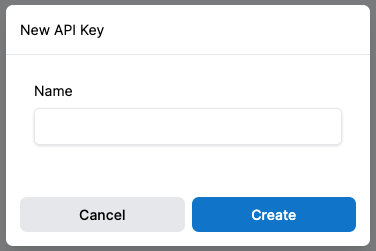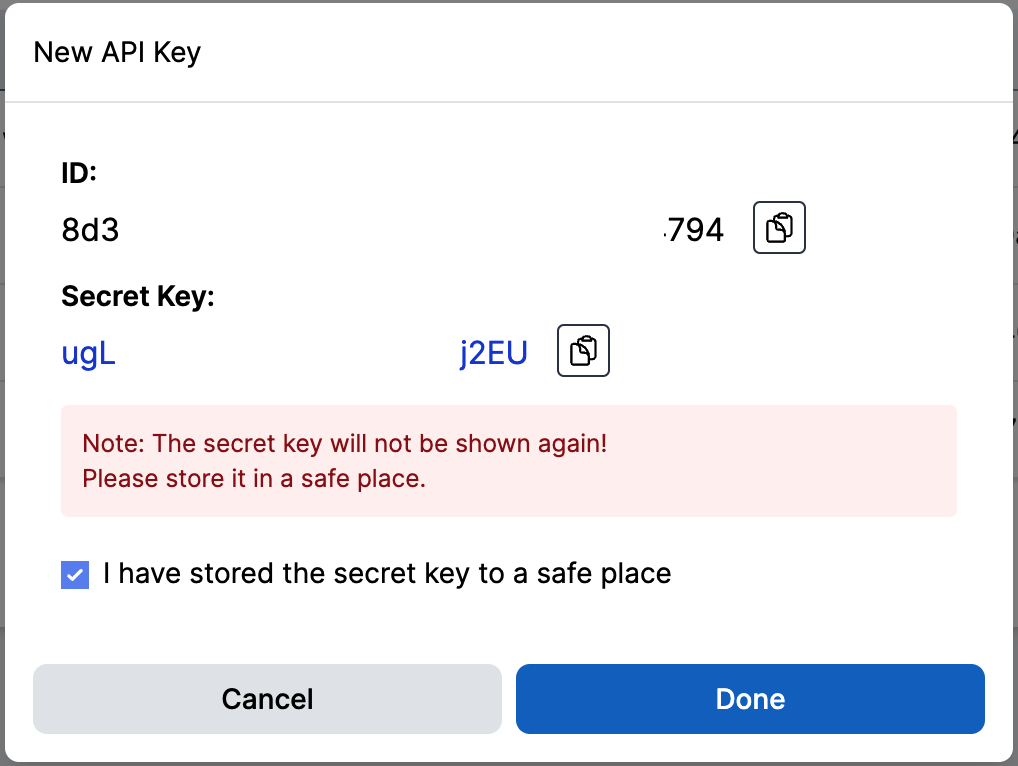API Keys
Introduction to API Keys
Cloverhound Cloud provides a robust REST API that enables developers to integrate external systems with Cloverhound Cloud. To ensure secure access to this API, administrators need to generate API keys. These keys serve two primary purposes:
- Authentication for the REST API
- Integration with Webex Contact Center connectors for Outbound Campaign Management
Creating an API Key
Follow these steps to create a new API key:
- Click the '+ New API Key' button.

- Assign a name to your API key:
- Choose a name that clearly represents the intended use of the API key.
- Ensure the name is unique within your organization.

-
After creating the name, a new modal will appear displaying:
- The API Key ID
- The API Key Secret
-
Important: Copy and securely store the API Key Secret
- The API Key Secret will only be displayed once for security reasons.
- You must copy and store this secret in a safe place.
- You can copy the API Key ID and store it as well.
- After storing the secret, check the box that says "I have stored the secret key to a safe place" and click the 'Done' button to close the dialog.

Once the New API key form closes, the user will not be able to see the API Key Secret. A new key will need to be generated if the user loses the secret
Using API Keys
The API Key ID and API Key Secret pair can be used in the REST API as the username and password for Basic Authentication Authorization.
Best Practices
- Generate separate API keys for different integrations or purposes to maintain better security and easier management.
- Regularly review and rotate your API keys to enhance security.
- Store API Key Secrets securely, such as in a password manager or secure vault.
- Never share API keys or secrets in public repositories or unsecured locations.
Security Note
Remember that anyone with your API Key ID and Secret can access your Cloverhound Cloud data through the API. Treat these credentials with the same level of security as you would a password.
By properly managing your API keys, you ensure secure and efficient integration between Cloverhound Cloud and your other systems or Webex Contact Center.